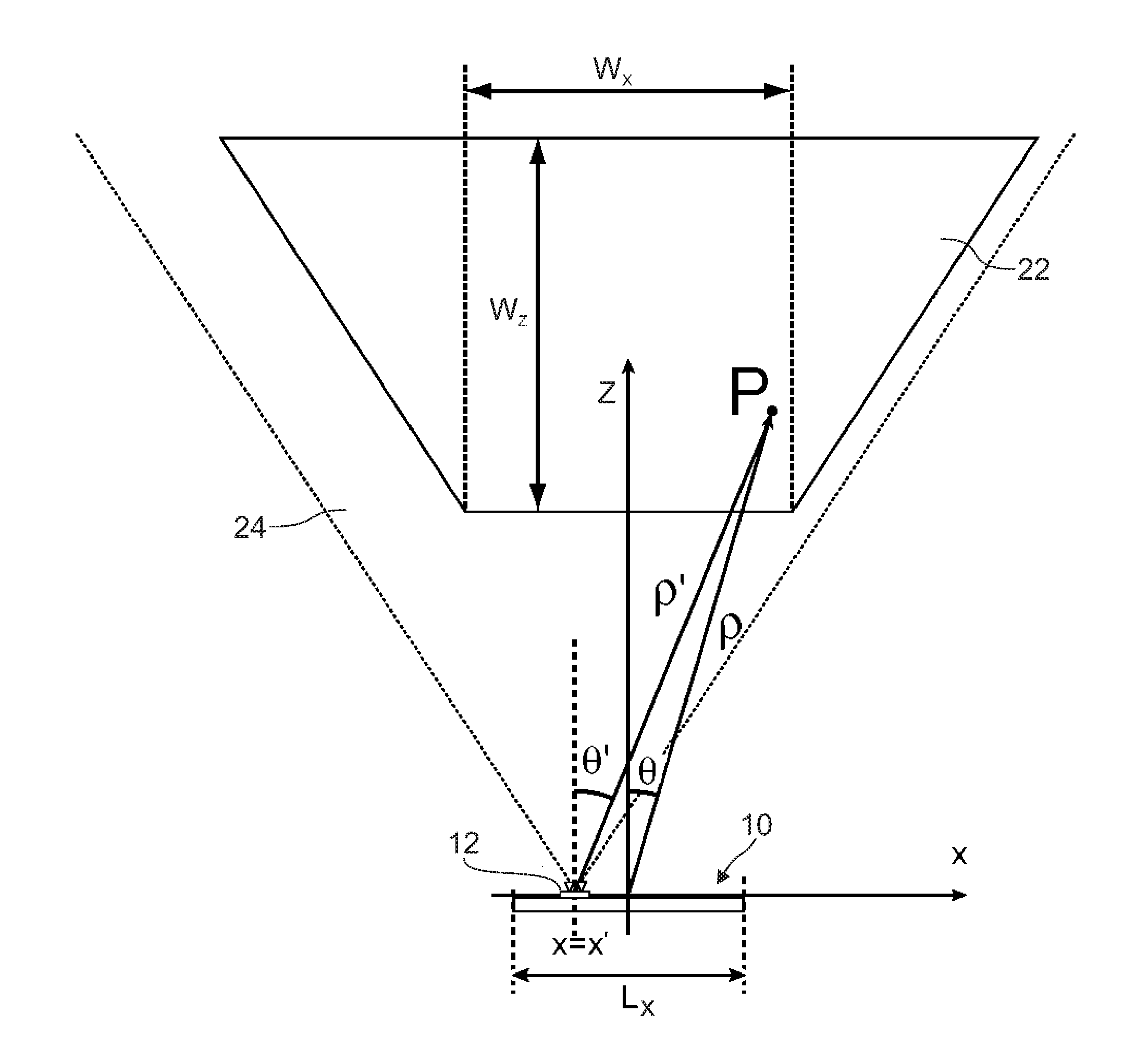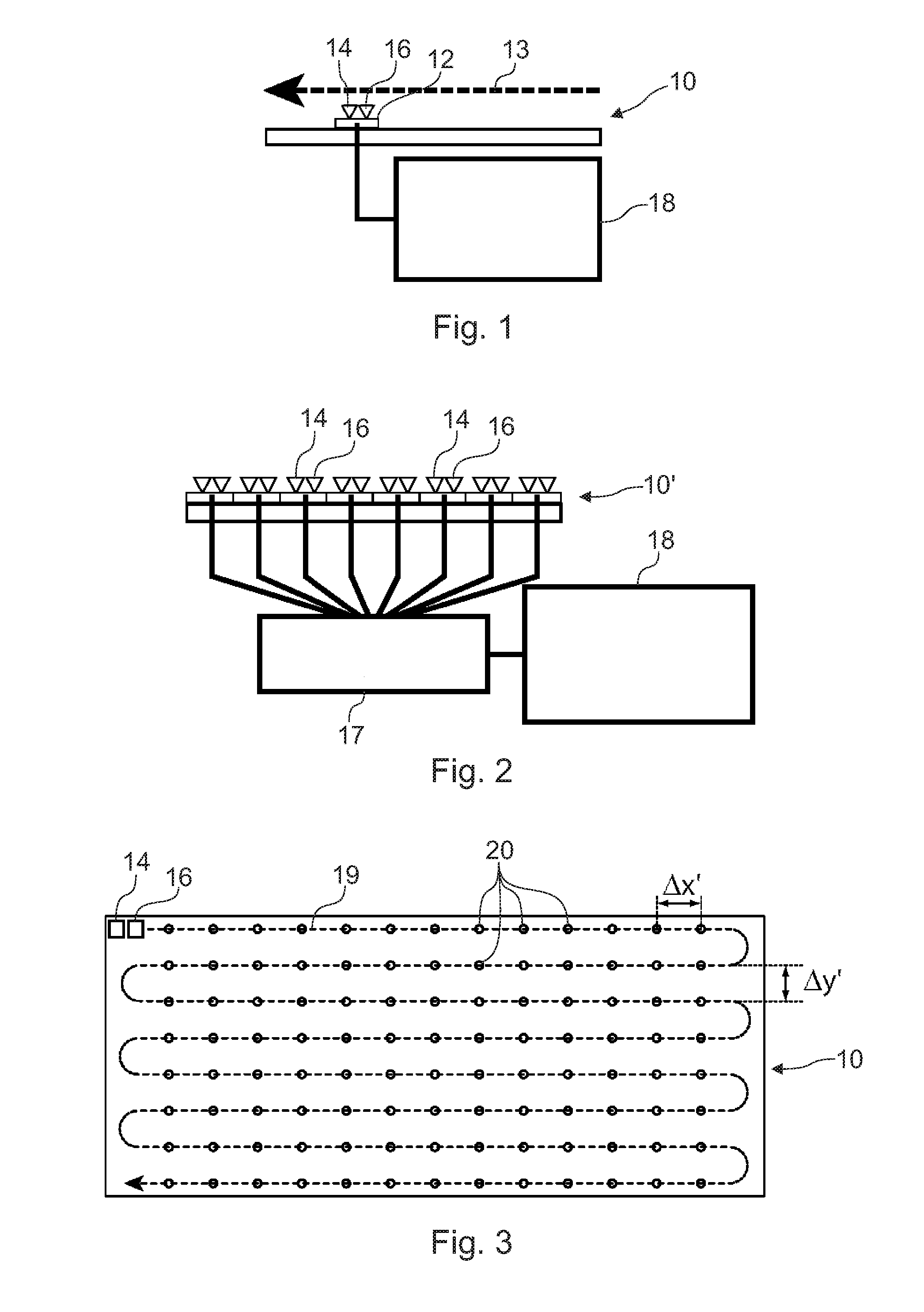Radar-imaging of a scene in the far-field of a one-or two-dimensional radar array
a radar array and far-field technology, applied in the field of radar imaging of scenes, can solve the problems inability to meet certain requirements of sub-optimal radar aperture lengths, and inability to use optimal aperture length imaging algorithms such as range migration and chirp-scaling algorithms
- Summary
- Abstract
- Description
- Claims
- Application Information
AI Technical Summary
Benefits of technology
Problems solved by technology
Method used
Image
Examples
examples
A. Numerical Simulations
[0066]The FPFA has been validated with a series of numerically simulated scenarios (in the 2D case). As a first example, a scene consisting of 5×5 point scatterers uniformly distributed in range and azimuth, with 500 mx=2 m). The aperture length to range resolution is Lx / δr≈1.3. Prior to the formation of the images, a four-terms Blackman-Harris window was applied both along frequency and the linear coordinate of the radar aperture dimensions. The reflectivity images were computed using the FPFA and, for comparison, the TDBA. In the FPFA, the first four terms of the image series in eq. (27), i.e., Ip(α, β) with 0≦p≦3. The dynamic range of the images was 100 dB. From the results, it clearly followed that the first term of the image series, the zeroth order expansion, is already an excellent approximation of the true reflectivity. In fact, it was found that the second term in the series has reflectivity values, on a pixel by pixel basis, at least 25 dB below tho...
PUM
 Login to View More
Login to View More Abstract
Description
Claims
Application Information
 Login to View More
Login to View More - R&D
- Intellectual Property
- Life Sciences
- Materials
- Tech Scout
- Unparalleled Data Quality
- Higher Quality Content
- 60% Fewer Hallucinations
Browse by: Latest US Patents, China's latest patents, Technical Efficacy Thesaurus, Application Domain, Technology Topic, Popular Technical Reports.
© 2025 PatSnap. All rights reserved.Legal|Privacy policy|Modern Slavery Act Transparency Statement|Sitemap|About US| Contact US: help@patsnap.com



